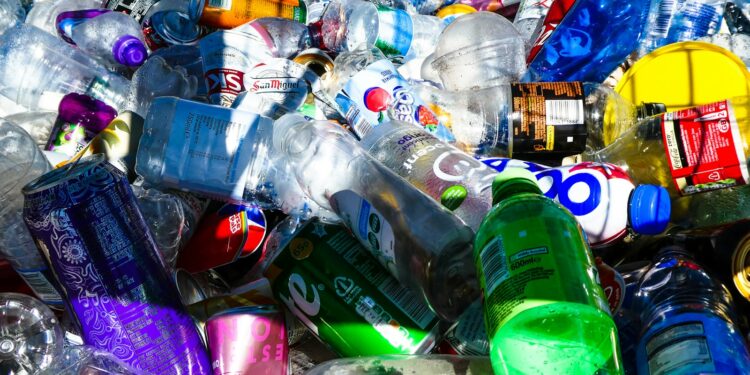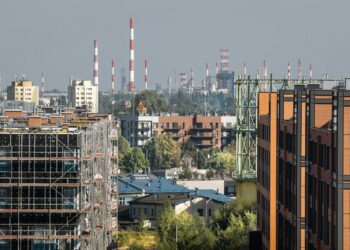In recent years, the circular economy has emerged as a buzzword in the world of sustainability, captivating the attention of businesses, governments, and environmental advocates alike. As the planet grapples with escalating environmental challenges—climate change, resource depletion, and mounting waste—the need for innovative, sustainable solutions has never been more urgent. Enter the circular economy: a transformative model that reimagines how we produce, consume, and manage resources. Unlike the traditional linear economy’s “take, make, dispose” approach, the circular economy seeks to keep resources in use for as long as possible, maximize their value, and regenerate materials and ecosystems at the end of their life cycle.
This blog post will take a deep dive into the circular economy, exploring its core principles, its critical importance, real-world examples of businesses putting it into action, and its potential to shape a sustainable future. Whether you’re a business leader, policymaker, or simply an eco-conscious reader, here’s why the circular economy matters—and how it’s already changing the game.
What is the Circular Economy?
At its heart, the circular economy is an economic system designed to eliminate waste and promote the continual use of resources. It stands in stark contrast to the linear economy, where resources are extracted, turned into products, and discarded after use. Instead, the circular economy operates as a closed-loop system, guided by three fundamental principles:
- Designing Out Waste and Pollution
This principle challenges businesses to rethink how products are designed and manufactured. The goal? Minimize waste and pollution from the very beginning. This means creating products that are durable, repairable, and recyclable, while using materials that are safe, sustainable, and non-toxic. For example, a company might opt for biodegradable packaging or modular designs that allow components to be replaced rather than trashed. - Keeping Products and Materials in Use
Why discard something when it can be reused, repaired, or recycled? This principle emphasizes extending the lifespan of products and materials through strategies like refurbishment, remanufacturing, and recycling. It also inspires innovative business models, such as “product-as-a-service,” where companies retain ownership of goods (think renting instead of buying) and customers pay for their use. This shift encourages businesses to prioritize longevity and efficiency. - Regenerating Natural Systems
Beyond reducing harm, the circular economy aims to actively restore the environment. This involves returning valuable nutrients to the soil (e.g., through composting), supporting biodiversity, and transitioning to renewable energy sources. It’s about creating a system that doesn’t just take from nature but gives back to it.
Together, these principles form a holistic framework for a regenerative economy—one that mimics nature’s own cycles of renewal and resilience.
Why the Circular Economy Matters
The circular economy isn’t just a trendy concept; it’s a vital response to some of the most pressing challenges of our time. Here’s why it’s so important:
- Environmental Benefits
By prioritizing resource efficiency and waste reduction, the circular economy tackles climate change, pollution, and habitat loss head-on. The Ellen MacArthur Foundation estimates that a global shift to circular practices could cut greenhouse gas emissions by 39% by 2050. That’s a game-changer for a planet in crisis. - Economic Opportunities
Far from being a burden, the circular economy offers significant financial upsides. Businesses can save costs through smarter resource use, tap into new revenue streams (like selling recycled materials), and drive innovation in product design and business models. The World Economic Forum projects that the circular economy could unlock $4.5 trillion in economic value by 2030. - Social Impact
The transition to a circular economy can create jobs in sectors like repair, recycling, and remanufacturing—industries that are labor-intensive and community-focused. It also promises cleaner air, less waste, and healthier living conditions, enhancing quality of life worldwide. - Resource Security
With finite resources under strain from population growth and industrialization, the circular economy offers a way to break the link between economic progress and resource depletion. It’s about doing more with less, ensuring resources remain available for future generations.
In short, the circular economy is a win-win-win: good for the planet, good for profits, and good for people.
Real-World Examples: The Circular Economy in Action
The beauty of the circular economy lies in its practicality. Businesses across industries are already embracing its principles—and seeing results. Here are four inspiring examples:
1. Patagonia: Pioneering Circular Fashion
Outdoor apparel brand Patagonia has long been a sustainability leader. Through its Worn Wear program, the company encourages customers to repair their gear rather than replace it, offering repair services and selling second-hand items. Patagonia also uses recycled materials in its products and aims to make everything fully recyclable or compostable by 2025. It’s a powerful example of designing out waste and keeping products in use.
2. Philips: Lighting as a Service
Electronics giant Philips has redefined how it delivers value with its “Light as a Service” model. Instead of selling lighting fixtures, Philips provides lighting solutions—retaining ownership of the products and charging customers for the light they use. This incentivizes the company to create durable, energy-efficient systems that can be maintained, upgraded, or recycled, embodying the principle of keeping materials in circulation.
3. Interface: Closing the Loop on Flooring
Interface, a global carpet tile manufacturer, has embraced a closed-loop recycling system. The company collects used tiles from customers, recycles them into new products, and has set an ambitious goal of achieving zero negative environmental impact by 2040. By regenerating materials and reducing reliance on virgin resources, Interface showcases the circular economy’s potential in heavy industry.
4. Renault: Revving Up Remanufacturing
French automaker Renault is driving circularity through its remanufacturing program. Used car parts—like engines and transmissions—are refurbished to like-new condition, cutting waste and offering customers affordable alternatives to new components. It’s a brilliant example of extending product lifecycles while maintaining quality.
These cases prove that circular strategies aren’t just theoretical—they’re profitable, scalable, and adaptable across sectors.
The Future of the Circular Economy
The circular economy is gaining momentum, and its future looks bright. Several trends are fueling its rise:
- Policy Support
Governments are stepping up. The European Union’s Circular Economy Action Plan, for instance, aims to make sustainable products the norm, reduce waste, and promote circular practices across industries. Similar initiatives are emerging globally, creating a supportive framework for businesses to transition. - Technological Innovation
Advances in artificial intelligence, blockchain, and materials science are supercharging circular solutions. AI can optimize manufacturing processes to minimize waste, while blockchain ensures transparency in supply chains—key enablers of a circular system. - Consumer Demand
Today’s consumers are more eco-conscious than ever, demanding sustainable products and holding companies accountable. Businesses that ignore this shift risk losing relevance, while those embracing circularity gain a competitive edge. - Collaboration
No one can build a circular economy alone. Initiatives like the Circular Economy 100 (CE100) network unite businesses, governments, and innovators to share knowledge and scale solutions. Collaboration is the glue that holds this transformation together.
Challenges Ahead
Of course, hurdles remain. Shifting consumer habits (e.g., from owning to renting), developing new technologies, and dismantling entrenched linear systems won’t happen overnight. Investment, education, and bold leadership will be essential to overcome these obstacles.
Yet the rewards—environmental resilience, economic growth, and social well-being—make the effort worthwhile. The circular economy isn’t just a trend; it’s a roadmap to a sustainable future.
Conclusion: A Call to Action
The circular economy offers a compelling vision: a world where waste is a thing of the past, resources are cherished, and businesses thrive by doing good. It’s a radical departure from the linear status quo, but as Patagonia, Philips, Interface, and Renault show, it’s entirely achievable. With supportive policies, cutting-edge technology, and growing public support, the circular economy is poised to redefine how we live, work, and prosper.
For businesses, the message is clear: embracing circular principles isn’t just a moral imperative—it’s a strategic advantage. For readers, it’s an invitation to support companies that prioritize sustainability and rethink our own consumption habits. Together, we can build an economy that doesn’t just take from the planet but gives back to it—a legacy worth leaving for generations to come.

















